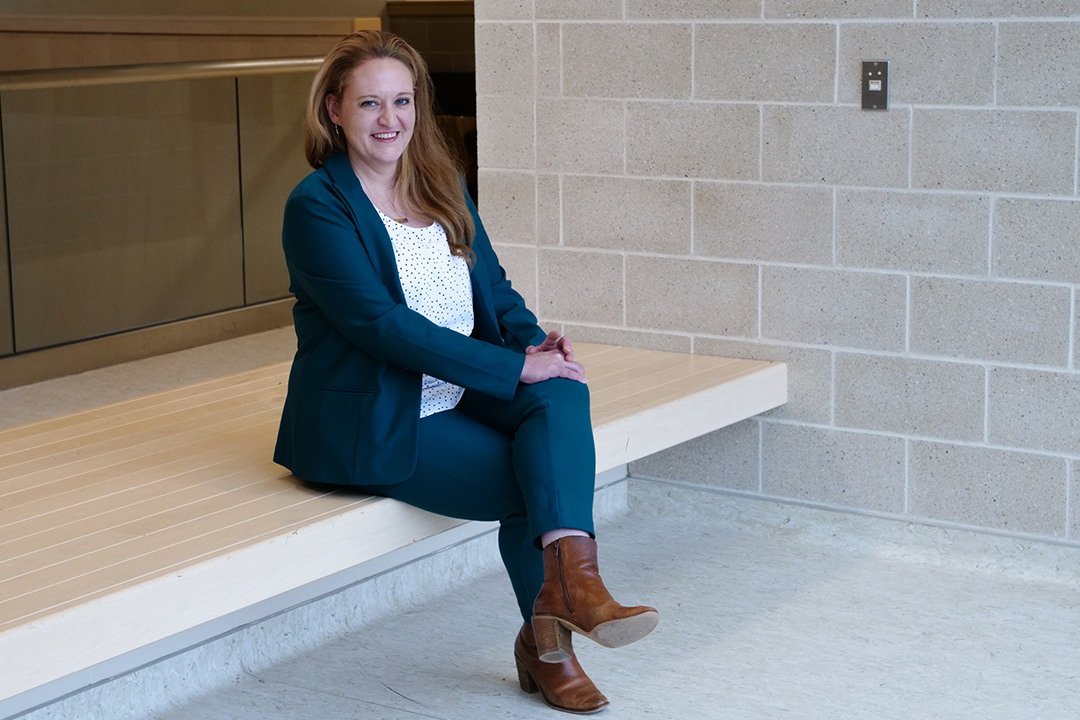
USask researcher secures CIHR funding for groundbreaking work on histamine and emerging pathogens
Understanding the interactions between microbes and their hosts can lead to new therapeutic strategies for major bacterial threats.
By Erin Matthews, Research Profile and ImpactFrom invading the host immune system to gathering nutrients needed to survive and thrive, opportunistic bacteria use many unique strategies to cause infection.
Dr. Jessica Sheldon (PhD), assistant professor in biochemistry, microbiology and immunology in the College of Medicine at the University of Saskatchewan (USask) is focused on drug-resistant bacteria and their interactions with histamine, a chemical commonly associated with our immune system and allergies.
Sheldon recently received funding from the Canadian Institutes of Health Research (CIHR) for her work on Acinetobacter baumannii (A. baumannii), an emerging pathogen that is behind illnesses like hospital acquired pneumonia and bloodstream infections like sepsis.
“Our main focus for the CIHR grant is teasing apart what the host histamine is doing and what the bacterial histamine is doing,” said Sheldon.
Sheldon’s lab at USask will use the CIHR grant to help understand how A. baumannii uses histamine to establish an infection. Histamine is a chemical created by our bodies that causes familiar symptoms like runny noses, watery eyes or itchy skin. But Sheldon says that some bacteria like A. baumannii use histamine to get iron, a nutrient that helps them grow and multiply.
Sheldon and her team are also investigating the potential of antihistamine-based drugs, which could be used in treating drug-resistant A. baumannii infections.
“With the rise of antimicrobial resistance, developing new strategies to combat infections caused by these bacteria is essential,” said Sheldon. “Our approach is to look into re-purposing of pre-existing drugs to help speed up this process."
As an early career researcher, this was Sheldon’s first time applying for a CIHR Project Grant, a competitive program that invests in advancing fundamental or applied research in health. Her successful application came as a bit of a shock.
According to data from CIHR, only nine per cent of first-time applicants are successful. Sheldon credits her passion for her research as one of the key reasons for her success.
“As a researcher, I think if you can convey that you are very interested and passionate about your work it gets all the other researchers reviewing these grants excited,” said Sheldon. “I’m just fascinated in how bacteria do the things they do,” said Sheldon.
Receiving an investment of $900,000 over five years allows Sheldon to provide training opportunities for students and helps draw attention to the research happening at USask.
“I'm incredibly grateful for the funding. It's a huge boost to the university whenever we get these kinds of investments,” said Sheldon. “It means that we can hire more people, we can do impactful research, and it helps to put USask on the map. We do great research here, but we often fly under the radar.”
Together, we will undertake the research the world needs. We invite you to join by supporting critical research at USask.

